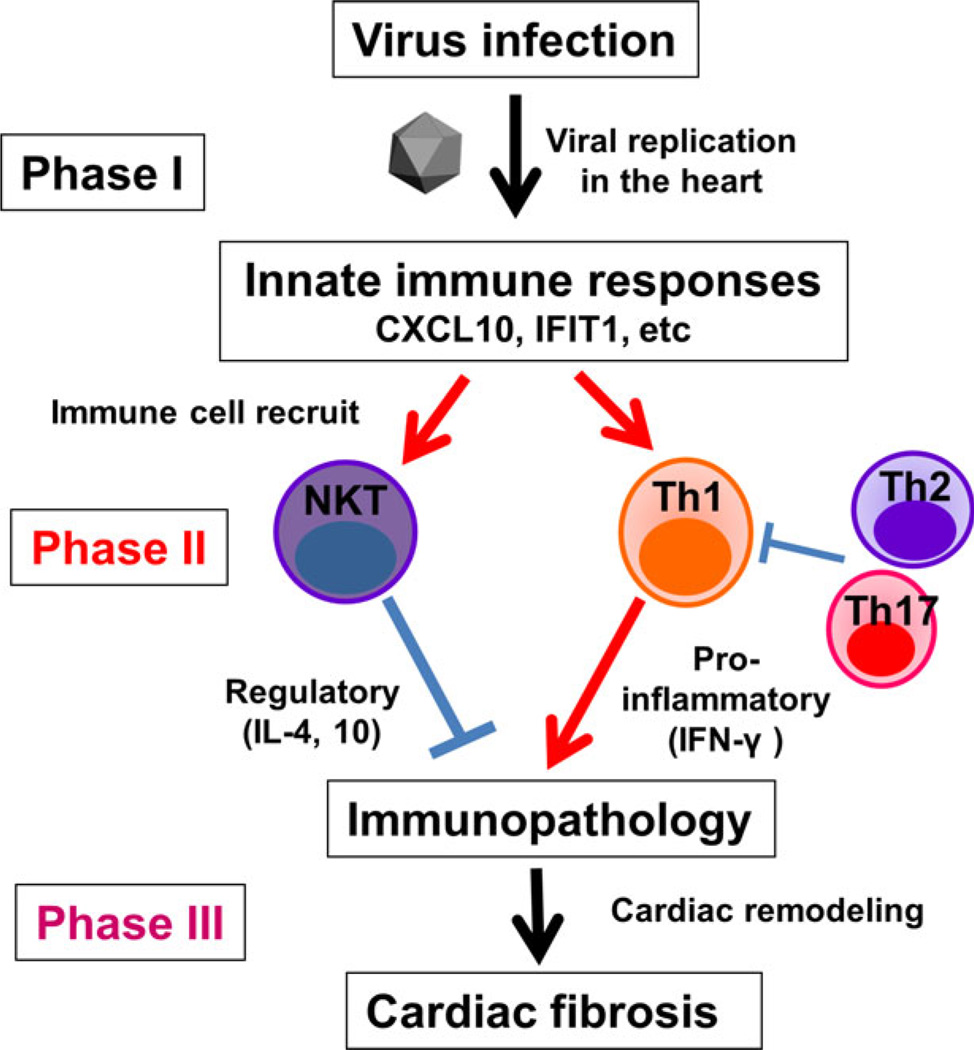Figure 5.
The working hypothesis of the mechanism of viral myocarditis. In phase I, viral infection and replication induce innate immune responses, upregulating chemokine and IFN-related genes (e.g. IFIT1) in the heart. In phase II, chemokines (e.g. CXCL10) recruit Th1 and natural killer T (NKT) cells to the heart. Th1 cells secrete pro-inflammatory IFN-γ, resluting in cardiac inflammation. In contrast, NKT cells produce IL-4 and IL-10, suppressing inflammation, while Th2 and Th17 cells might also suppress Th1 cells. The imbalance between pro-inflammatory versus anti-inflammatory immune responses causes immunopathology, followed by cardiac remodeling and fibrosis in phase III.

